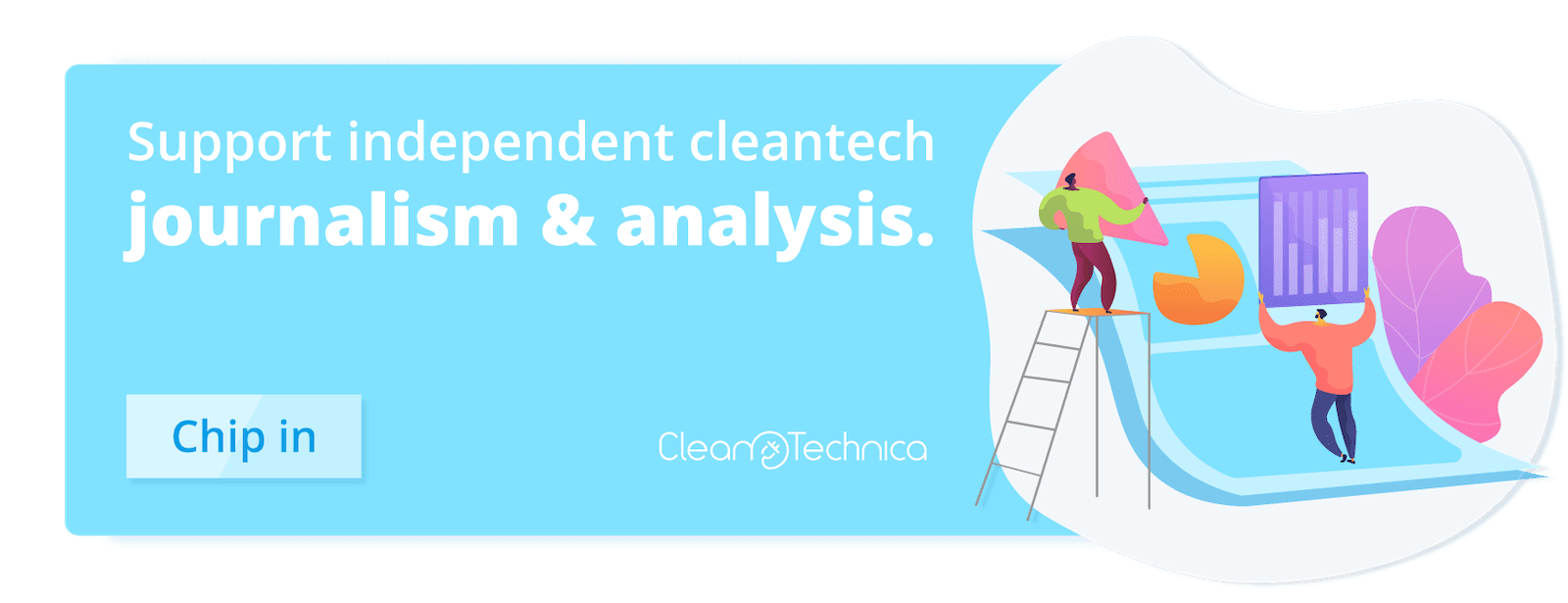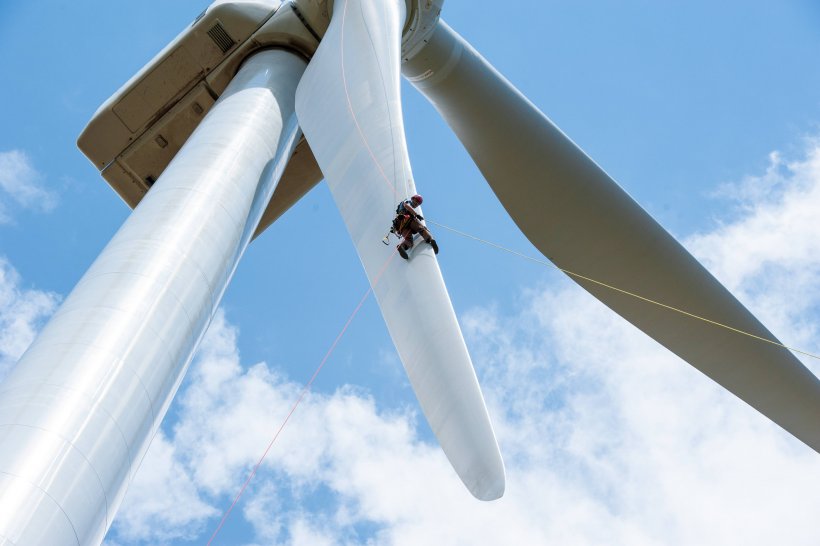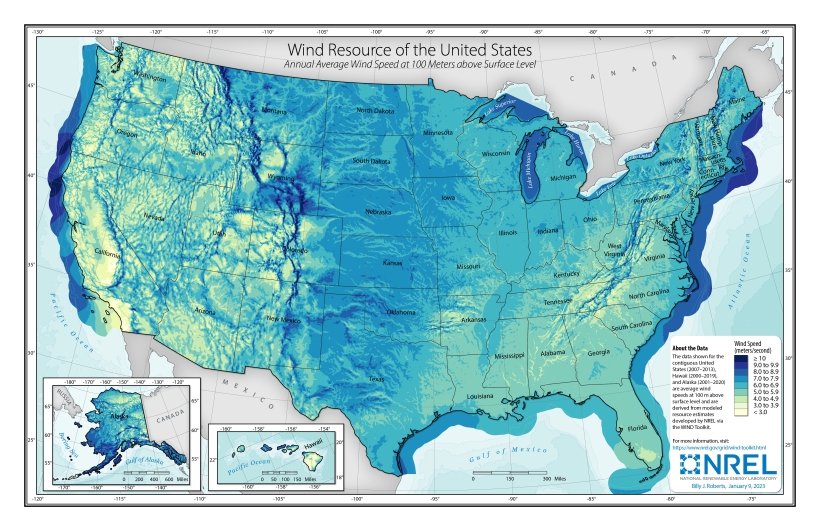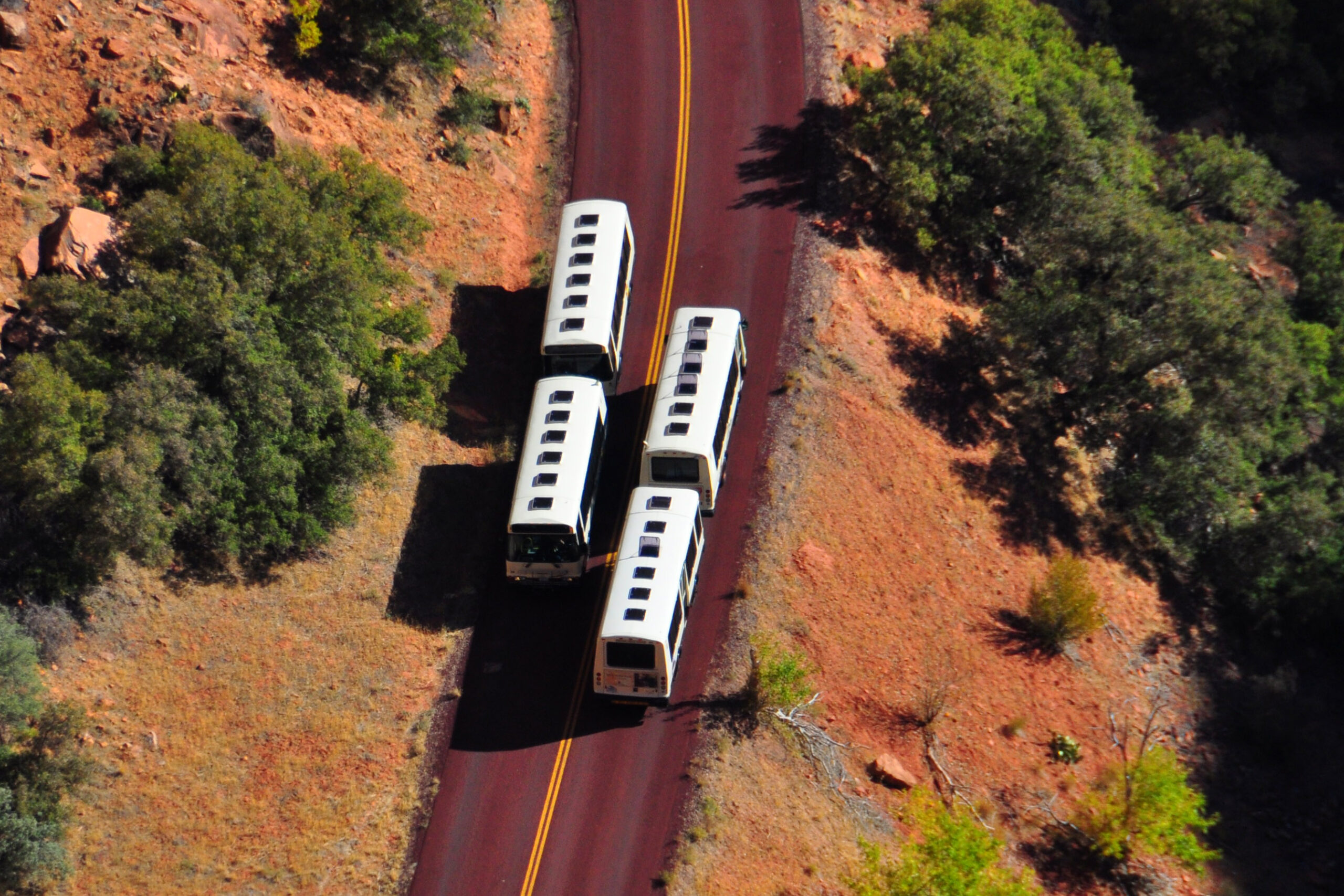
Brush up on your knowledge of wind! This article is part of the Energy.gov series highlighting the “Top Things You Didn’t Know About Energy” series.
10. Human civilizations have harnessed wind power for thousands of years. Early forms of windmills used wind to crush grain or pump water. Now, modern wind turbines use the wind to create electricity. Learn how a wind turbine works.

Wind turbines are soaring to record sizes. The average rotor diameter of turbines installed in 2022 grew to 432 feet, up 173% since 1998–1999. Photo from Werner Slocum, National Renewable Energy Laboratory.
9. Today’s wind turbines are much more complicated machines than the traditional prairie windmill. A wind turbine has as many as 8,000 different components.
8. Wind turbines are big. Wind turbine blades average 210 feet long, and turbine towers average over 320 feet tall—taller than the Statue of Liberty. The average nameplate capacity of turbines is also increasing, meaning they have more powerful generators. The average capacity of utility-scale wind turbines installed in 2022 was 3.2 megawatts (MW), up 7% from the previous year.
7. Higher wind speeds mean more electricity, and wind turbines are getting taller to reach higher heights above ground level where it’s even windier. See the Energy Department’s wind resource maps to find average wind speeds in your state or hometown and learn more about opportunities for taller wind turbines in a report from the Energy Department’s National Renewable Energy Laboratory.

A map of the united states colored by wind speed at 100 meters above sea level on land off the coastlines. Wind resources at 100 meters above the ground, Map from the National Renewable Energy Laboratory.
6. Many of the components of wind turbines installed in the United States are manufactured here, with more than 500 wind-related manufacturing facilities across the country. The U.S. wind industry currently employs more than 125,000 people, including 23,543 in manufacturing and 45,088 in construction.
5. Offshore wind represents a major opportunity to provide power to highly populated coastal cities. There are small projects installed off the coasts of Rhode Island and Virginia, and dozens of larger projects in the works. See what the Energy Department is doing to develop offshore wind in the United States.

Block Island Wind Farm installed off the coast of Rhode Island. Photo from Dennis Schroeder, National Renewable Energy Laboratory.
4. There is utility-scale wind power (from turbines over 100 kilowatts) installed in 42 states. Thirty-five states, plus Puerto Rico, had more than 100 MW of wind capacity at the end of 2022, with 23 of these above 1 gigawatt (GW, or 1,000 MW), 19 above 2 GW, and 17 above 3 GW. There is distributed wind installed in all 50 states plus the District of Columbia, Puerto Rico, Guam, and the U.S. Virgin Islands.
3. The United States has installed over 144,000 megawatts of wind capacity, making it the largest renewable energy source in the United States. In 2022, the U.S. wind industry added over 8,500 MW of new capacity, representing $12 billion in investment.
2. Wind energy is affordable. Wind prices for power contracts signed in the last few years are 1.5–4 cents per kilowatt-hour.
1. Wind energy provides more than 20% of total electricity generation in 12 states, with more than 50% in Iowa and South Dakota, and more than 30% in Kansas, Oklahoma, North Dakota, New Mexico, and Nebraska. Overall, wind energy supplied more than 10% of total U.S. electricity generation in 2022.
Learn More
By Liz Hartman, the Communications Lead for DOE’s Wind Energy Technologies Office, Energy.Gov.
I don’t like paywalls. You don’t like paywalls. Who likes paywalls? Here at CleanTechnica, we implemented a limited paywall for a while, but it always felt wrong — and it was always tough to decide what we should put behind there. In theory, your most exclusive and best content goes behind a paywall. But then fewer people read it! We just don’t like paywalls, and so we’ve decided to ditch ours. Unfortunately, the media business is still a tough, cut-throat business with tiny margins. It’s a never-ending Olympic challenge to stay above water or even perhaps — gasp — grow. So …







